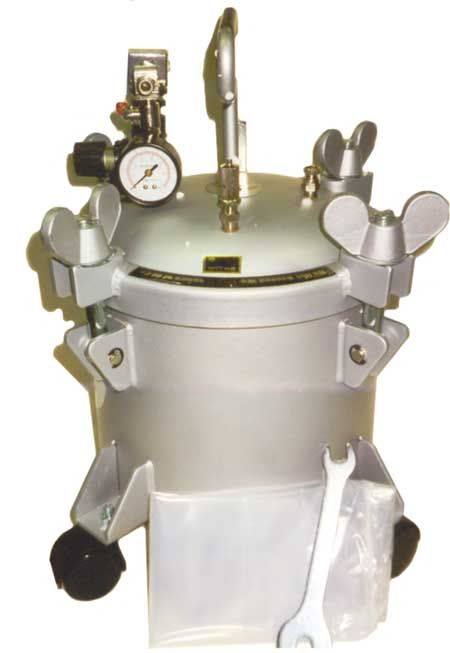mcabrera1275
Well-Known Member
I'm interested in getting into pressure casting with a pressure pot. I've read a few threads on the dangers of pressure casting and am somewhat concerned about getting injured.
I really get paranoid reading about "close-call" stories of people's pressure pots exploding and narrowly missing their body/head. Yikes! :confused
I was told that C.A. Technologies produces a pressure pot that is meant for resin casting that is teflon lined, made of steel and has more secure clamps versus the widely used Harbor Freight brand pressure pots. Supposedly, the way the clamp style is designed, it provides a more secure connection for the lid. Is this true? Or just opinion? Also, does the fact that it is made of steel matter more? What are the HF pots made of?
Here is the link to the C.A. Technologies resin pressure pot: C.A. Technologies Resin (Mold) Casting Pressure Pots
Has anyone used this particular pot? I do like how the clamps do seem more secure but can anyone confirm? I would also appreciate any insights/opinions on topics of safety regarding pressure pot casting. Thanks.

I really get paranoid reading about "close-call" stories of people's pressure pots exploding and narrowly missing their body/head. Yikes! :confused
I was told that C.A. Technologies produces a pressure pot that is meant for resin casting that is teflon lined, made of steel and has more secure clamps versus the widely used Harbor Freight brand pressure pots. Supposedly, the way the clamp style is designed, it provides a more secure connection for the lid. Is this true? Or just opinion? Also, does the fact that it is made of steel matter more? What are the HF pots made of?
Here is the link to the C.A. Technologies resin pressure pot: C.A. Technologies Resin (Mold) Casting Pressure Pots
Has anyone used this particular pot? I do like how the clamps do seem more secure but can anyone confirm? I would also appreciate any insights/opinions on topics of safety regarding pressure pot casting. Thanks.

